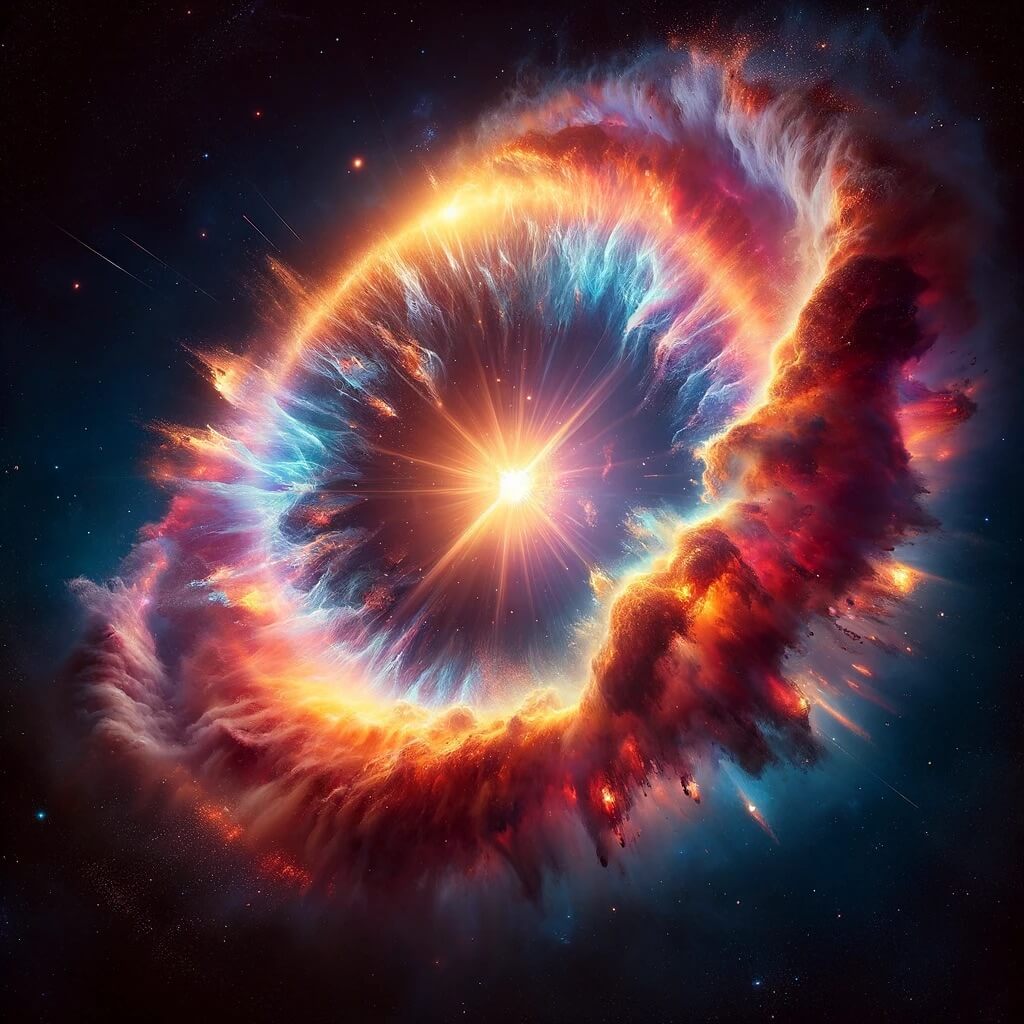
Cosmic Cataclysms
Understand cosmic cataclysmic events
More Information
Cosmic cataclysms are mysterious and fleeting explosions that may be observable in the night sky for anywhere from a few seconds to weeks, or even years. For example, supernovae and gamma-ray bursts are high-powered cosmic explosions that we know of, but there are many other exotic happenings in the night sky yet to be studied and understood. In such explosions, there is a temporary but drastic increase in brightness that Citizen Astronomers can observe to help astronomers understand these cataclysmic events.
Stellar Death to Cosmic Cataclysm:
The last stages of a star’s life can cause cosmic explosions visible to us on Earth. For example, novae come from star systems where a main-lifetime star and a white dwarf orbit each other. White dwarfs are the dense cores of old Sun-like stars and can erupt as a nova when they briefly reignite by cannibalizing their companion star. However, supernovae are much more powerful. These cataclysmic explosions can be caused by a white dwarf destroying itself completely or a giant star caving under its own gravity as it dies of old age. A collapsing star can leave behind a neutron star, a black hole, or no star at all. Neutron stars are the densest objects in the universe – they are only about 15 km wide, but one teaspoon of their material would weigh 4 billion tons!
An Exotic Universe:
Novae and Supernovae are not the only types of cosmic cataclysms that our universe has to offer. Other exotic events loom in the great beyond, like gamma-ray bursts, which are tremendously energetic explosions observed in distant galaxies. They are the most energetic and luminous events since the Big Bang and are thought to signify the birth of black holes or the merging of neutron stars. Fast radio bursts are another type of short-lived event, which may be caused by over-powered neutron stars. Astronomers are still hard at work studying these and other mysterious happenings, and Citizen Astronomers can help as long as there is something visible to observe.
Your Contribution:
Cataclysmic events happen every night, and oftentimes are bright enough to be observed by Unistellar telescopes! By detecting the increase and decrease in brightness from these transient events, you can help space scientists figure out what caused them.
To start watching these explosions, visit our Missions page to see what events are visible to you. Head to the Tutorial page for guidance on how to master your Unistellar telescope. The exciting results from Citizen Astronomers’ observations of cosmic explosion are posted on the Results page, so you can see what kind of discoveries you will be making!
Ticket Required: No
Minimum Age: 13
Languages: English
